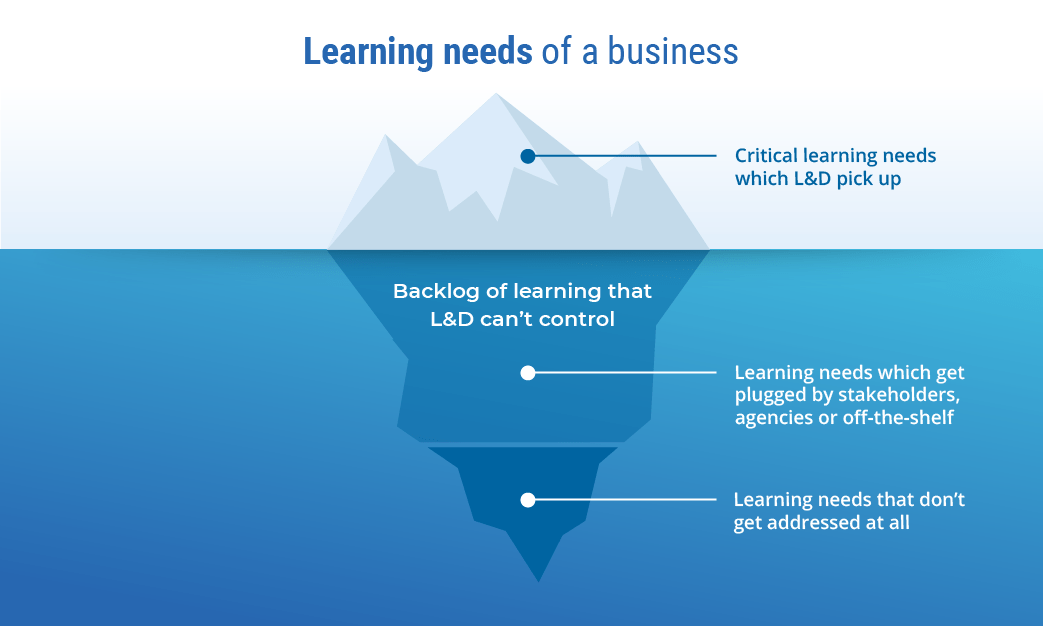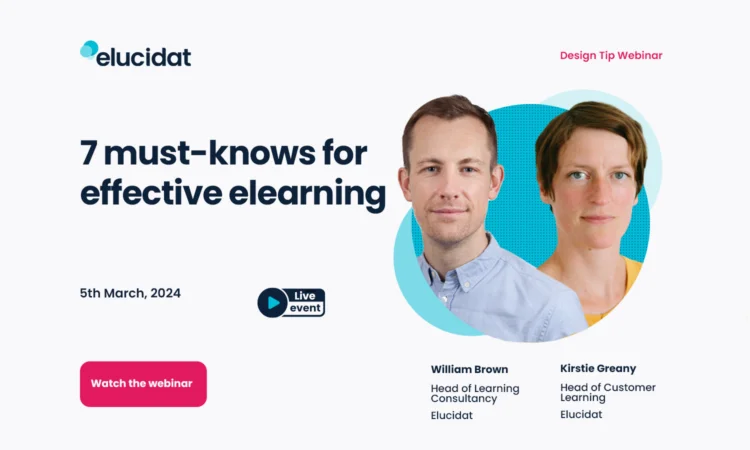4 ways L&D can do more with less (and thrive during a recession)
5 minute read
Following years of transformation in response to COVID-19, more challenges and changes are on the way. Faced with increased economic pressure, businesses are rethinking their strategies. While organizations’ learning needs are growing, budgets are limited. So, how can Learning & Development (L&D) do more with less, and even thrive during a recession? Read on to find out.

How the recession will impact L&D
Over the past couple of years, businesses have had to deal with many challenges. A global pandemic, political chaos, unpredictable markets, the Great Resignation… the list could go on. The economic pressure this has created means big changes for organizations. Budgets will be cut. Headcount will decrease.
It’s no secret that L&D is often one of the first departments to come under pressure in a recession, and L&D teams are already struggling. According to research by the Brandon Hall Group, over half of L&D teams don’t have enough budget, time and people. If cuts are made in haste, they could seriously impair productivity at a time when companies need it most.
The response to the pandemic has shown how L&D is fundamental to navigating periods of change. So, it’s not surprising that the Brandon Hall Group found that 66% of organizations place competencies and skill development as their number one focus in 2022. With limited budgets, that means L&D will be asked to do more with less.
Navigating the impending downturn
If your organization wants to survive the downturn and even come out stronger, they need to start preparing and driving efficiency now.
For L&D teams, that means exploring new processes and technologies that can enable:
- Working at scale: If you need to increase output or respond quickly to change, you need technology that supports you. Otherwise, you may have to outsource production to meet your business needs. This increased cost isn’t desirable during an economic downturn and may not even be possible.
- Capturing expertise: Subject Matter Experts (SMEs) and stakeholders are essential to the success of all your organization’s learning. Before any redundancies are made or roles shifted, you need to capture their expertise and make it easily shareable. If this doesn’t happen, you risk new skill gaps emerging. Getting SMEs directly involved in producing learning is a quicker, more cost effective way to future-proof your organization. Find out more about how you can do this with Collaborative Content Creation.
- Maintaining quality: Under pressure with a growing backlog of training requests, L&D teams can cut corners to meet demand. Stakeholders may even take things into their own hands. This decreases the effectiveness of the learning. It doesn’t solve the skills shortage issue any quicker and may even make the problem worse.
- Creating impact: Whether you’re struggling to respond at speed and scale or maintain quality, ultimately, it means employees aren’t getting the learning they need to succeed in their roles. This widens the existing skill gap and can have an even bigger business impact when workforce reductions are occurring.
4 ways L&D can thrive during a recession (and cut costs)
To respond to changing needs at speed and scale and, of course, with impact, L&D teams need to be flexible and ready to adapt their approach.
Here are 4 key things you can do now to make sure you’re ready.
1. Reduce dependency on external suppliers
Bringing more learning production inhouse can considerably reduce your budget. It means less money is spent with expensive external agencies, freelancers and contractors.
While agency-created content can be high quality, it’s often a long and expensive process to create and maintain. Off-the-shelf content can be quick to deploy, but usually lacks relevance and can offer very little return on investment. With the right processes and technology in place, inhouse elearning production puts you in control and enables you to work at speed and scale to produce impactful learning experiences.
2. Maximize the power of your people
Empowering every employee to produce effective learning content increases your output without increasing your costs. Capturing internal expertise and experience also has longer term benefits by ensuring critical business knowledge and experience is retained even when people leave.
Of course, Subject Matter Experts (SMEs) are content experts not learning designers. They’re also used to sharing their expertise face-to-face, rather than digitally. So, you need tools and techniques to support them to turn their expertise into effective learning.
Find out how you can do this with our guide to setting SMEs up for success and blogs on how to involve SMEs and transform the way you work together.
3. Minimize inefficiencies
Working at an enterprise-level of scale requires effective collaborative workflows. Whether you’re gathering content or reviewing a course, collaboration will enable you to speed up and reduce inefficiencies at each stage of the process.
Before you open up elearning production to people across your organization, you need to establish efficient processes and effective technologies. Doing this from the start will make things run more smoothly. It allows your new elearning creators to focus on the knowledge they want to share and avoid technical errors and visual inconsistencies.
As the L&D experts, you and your team can have oversight, maintain control and reduce risk. Want to explore more ways to efficiently meet demand. Read our blog on how to scale up production.
4. Locate and fill skill gaps
Following a year when people quit their jobs at historic rates, we’re entering another period of workforce reductions. Critical business knowledge could be lost overnight. The skill gaps that already exist could get a lot worse, and new ones will appear.
This means your organization’s backlog of learning is about to increase. If you’re not ready to adapt, these learning needs will not be met and serious business and compliance risk is introduced.

You need to take control of the backlog of learning content. By empowering any employee to create learning, you and your team are freed up to take on the role of strategic oversight. That means building up a roadmap of future learning and performance needs and ensuring the content that’s produced is impactful, relevant, and timely. This will mitigate the risk of knowledge loss and skills gaps appearing during periods of change.
In summary
Faced with an impending economic downturn, businesses are rethinking their strategies, cutting budgets and decreasing headcount. Demand for impactful digital learning to support these changes is at an all-time high. So, L&D teams are being asked to do more with less.
If you’re going to ensure that your organization has what it needs to succeed under these new economic pressures, you need to get prepared. Make sure you’re ready with processes and technologies that enable you to:
- Scale learning production
- Harness the expertise of internal experts
- Maintain the quality of learning
- Increase learning impact
Hear what the experts think
Interested to hear from top learning experts, analysts and organizations on what they think you need to focus on during the recession?
Join our upcoming live panel discussion to discover how you and your team can thrive by implementing a collaborative L&D model to future-proofing your digital learning production.



